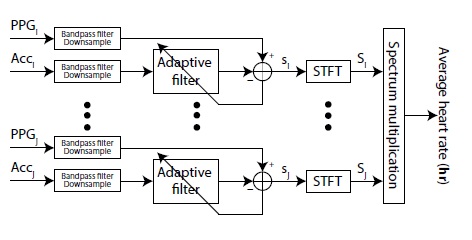- ALL COMPUTER, ELECTRONICS AND MECHANICAL COURSES AVAILABLE…. PROJECT GUIDANCE SINCE 2004. FOR FURTHER DETAILS CALL 9443117328


Projects > ELECTRONICS > 2017 > IEEE > DIGITAL SIGNAL PROCESSING
Recently numerous methods have been proposed for estimating average heart rate using photoplethysmography (PPG) during physical activity, overcoming the significant interference that motion causes in PPG traces. We propose a new algorithm framework for extracting instantaneous heart rate from wearable PPG and ECG signals to provide an estimate of heart rate variability during exercise. Methods: For ECG signals we propose a new spectral masking approach which modifies a particle filter tracking algorithm, and for PPG signals constrains the instantaneous frequency obtained from the Hilbert transform to a region of interest around a candidate heart rate measure. Performance is verified using accelerometry and wearable ECG and PPG data from subjects while biking and running on a treadmill.
Wiener Filtering and the Phase Vocoder, Decomposition Algorithm.
The robust estimation of instantaneous heart rate from non-obtrusive sensors is important for gaining an insight into the autonomic nervous system. This is of use in a wide range of clinical situations, from diabetic neuropathy to sleep analysis, an increasingly in non-clinical situations, such as optimizing exercise routines. However, doing this for practical out-of-the-lab use with wearable sensors requires signal processing to be applied to the raw collected signals in order to allow accurate estimations of the instantaneous heart rate despite the presence of motion artifacts. This is particularly true for PPG signals which are easily wearable and integrated into smart watches, but particularly susceptible to motion interference. The proposed method estimates instantaneous heart rate from wrist PPG signals during intensive physical activity. The results have shown in details how instantaneous heart rate conveys more information about the heart state, in terms of variability, beats per minute, and the reported timing of salient signal features such as the minimum heart rate point than considering average heart rate alone.
Arrangement of Adaptive Filters
